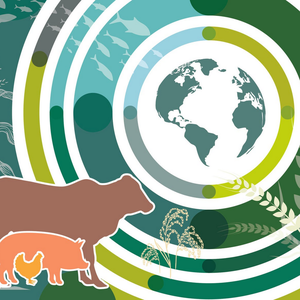The need for aquaculture development was further confirmed by new statistics from IFPRI that show the global community is not on course to end hunger by the United Nations Sustainable Development Goal deadline of 2030. If hunger declines at the same rate as the report finds it has since 1992, more than 45 countries - including India, Pakistan, Haiti, Yemen, and Afghanistan - will still have “moderate” to “alarming” hunger scores in the year 2030, far short of the goal to end hunger by that year.
“Simply put, countries must accelerate the pace at which they are reducing hunger or we will fail to achieve the second Sustainable Development Goal,” said IFPRI Director General Shenggen Fan. “Ending global hunger is certainly possible, but it’s up to all of us that we set the priorities right to ensure that governments, the private sector and civil society devote the time and resources necessary to meet this important goal.”
The Central African Republic, Chad, and Zambia had the highest levels of hunger in the report. Seven countries had “alarming” levels of hunger, while 43 countries – including high-population countries like India, Nigeria, and Indonesia – had “serious” hunger levels.
The report outlined some bright spots in the fight to end world hunger. The level of hunger in developing countries as measured by the Global Hunger Index has fallen by 29 percent since 2000. Twenty countries, including Rwanda, Cambodia, and Myanmar, have all reduced their GHI scores by over 50 percent each since 2000. And for the second year in a row, no developing countries for which data was available were in the “extremely alarming” category.
But declines in average hunger levels across regions or individual countries do not tell the whole story. The averages can mask lagging areas where millions are still hungry, demonstrating the need for data and targeted solutions for the communities facing the greatest need. Although the Latin America region has the lowest regional GHI score in the developing world, Haiti, for example, has the fourth highest GHI score at an “alarming” 36.9. Mexico has a low level of overall hunger, but also contains areas within its borders where child stunting—an indicator of child undernutrition—is relatively high.
“Whilst the world has made progress in the fight against hunger there are still 795 million people condemned to facing hunger every day of their lives,” said Dominic MacSorley, CEO of Concern Worldwide. “This is not just unacceptable, it is immoral and shameful. Resources like the Global Hunger Index provide us with a critical insight into the scale of the global hunger crisis. Agenda 2030 provides us with the ambition and commitment to reach zero hunger. We have the technology, knowledge and resources to achieve that vision. What is missing is both the urgency and the political will to turn commitments into action.”
Another obstacle for reaching zero hunger is the lack of complete data for calculating the index scores for 13 countries. 10 of these countries have indicators like stunting, wasting and child mortality that raise significant concern for having high hunger levels, including Sudan, South Sudan, Somalia, and the Syrian Arab Republic. “Armed conflict is a leading cause of hunger and undernutrition in many of these countries,” said Bärbel Dieckmann, President of Welthungerhilfe. “Zero Hunger will only be possible if we significantly increase political commitments to conflict resolution and prevention.”
The GHI, now in its 11th year, ranks countries based on four key indicators: undernourishment, child mortality, child wasting and child stunting. The 2016 report ranked 118 countries in the developing world, almost half of which have “serious” or “alarming” hunger levels.
The GHI score for the developing world as a whole is 21.3, which is in the low end of the “serious” category. Regionally, Africa South of the Sahara has the highest hunger level, followed closely by South Asia. Rounding out the top 10 countries with the highest levels of hunger after Central African Republic, Chad, and Zambia are: Haiti, Madagascar, Yemen, Sierra Leone, Afghanistan, Timor-Leste, and Niger.
Around half of the populations of Haiti, Zambia, and the Central African Republic are undernourished—the highest in the report. In Timor-Leste, Burundi, and Papua New Guinea, approximately half of children under five are too short for their age due to nutritional deficiencies.
\"The 2030 Agenda set a clear global objective for an end to hunger - everywhere - within the next 14 years,\" says David Nabarro, Special Adviser to the UN Secretary-General on the 2030 Agenda for Sustainable Development and Climate Change. \"Too many people are hungry today. There is a need for urgent, thoughtful and innovative action to ensure that no one ever goes hungry again.\"










